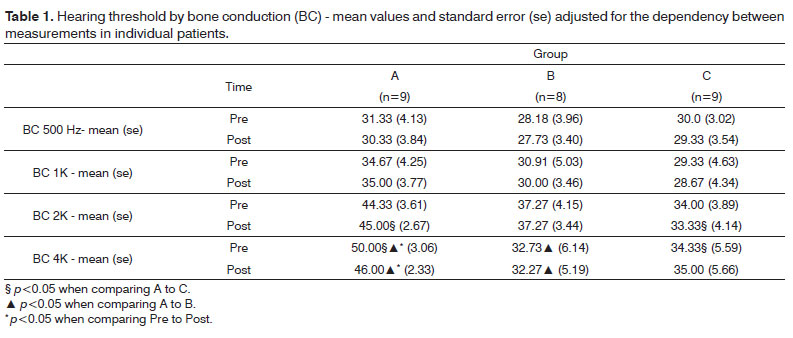Otospongiosis is a primary osteodystrophy of the otic capsule that affects genetically predisposed individuals and leads to a progressive hearing loss. AIM: To evaluate the applicability of audiometric evaluation during drug treatment for otospongiosis. MATERIALS AND METHODS: A prospective, randomized, controlled, double-blind study involving 26 patients with clinical, audiometric and CT scan image of otosclerosis. Patients eligible for the study were divided into three groups (A, B and C) and received treatment with alendronate sodium (B), sodium fluoride (C) and placebo (A) for 6 months. After this period they were submitted to new tests. RESULTS: There were not statistically significant differences between air and bone conduction (gap). We also found no differences in the speech recognition threshold (SRT) and speech discrimination (IRF) between before and after treatment. CONCLUSION: After six months of drug treatment the audiometric evaluation kept the same hearing thresholds, suggesting stabilization of the otospongiotic lesions.
audiometry; hearing loss; otosclerosis




